We Just Protected a Pristine Midwest Wilderness from Mining
Dangerous mining plans threatened to ruin a pristine wilderness and a town’s thriving economy. Until we stepped in.

This page was published 2 years ago. Find the latest on Earthjustice’s work.
Editor’s Note
In an important victory in the longstanding efforts to defend the Boundary Waters Wilderness Area, a federal judge on Sept. 7 dismissed a lawsuit brought by Twin Metals that would have forced the Biden administration to renew mining leases that threaten the Boundary Waters. Earthjustice — representing Center for Biological Diversity, The Wilderness Society, and Izaak Walton League of America — had intervened in the lawsuit to defend the Boundary Waters.
Deep in the Minnesota woods lies the Boundary Waters Canoe Area Wilderness, one of North America’s most pristine and treasured landscapes. For years, Earthjustice has been advocating in and out of court to protect the Boundary Waters from dangerous mining plans. And together with our clients, we just got a big win. A federal judge upheld the Biden administration’s cancellation of two mining leases that would have threatened the Boundary Waters with a toxic mining proposal.
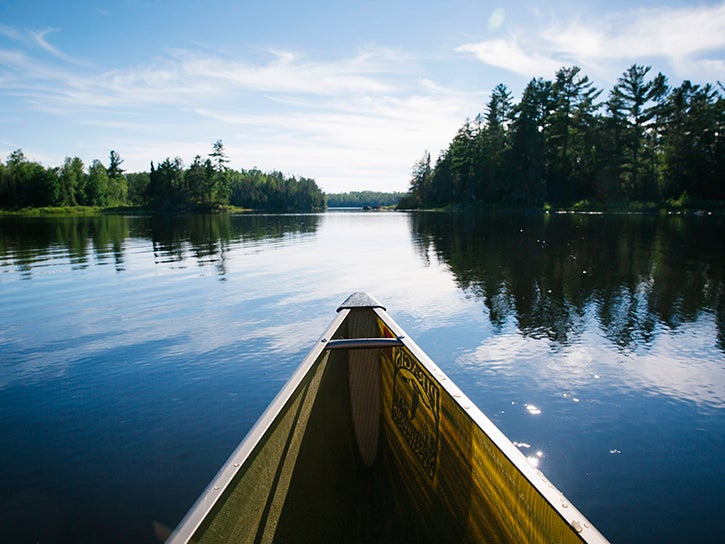
Canoeing over glassy water in the Boundary Waters Canoe Area Wilderness. (Brad Zweerink / Earthjustice)
Each year, roughly 250,000 people travel to the Boundary Waters to canoe in the area’s hundreds of clear, glacial lakes in the summer and go dog sledding and ice fishing in the winter. While in the Boundary Waters, visitors experience a rare sense of quiet that’s punctuated only by the wail of loons, the splash of paddles, and the yips and howls of nearby wolves.

Aerial view of Boundary Waters Canoe Area Wilderness in Northern Minnesota. (Jim Brandenburg / Minden Pictures)
The lakes strewn across the Boundary Waters, like a handful of turquoise gems tossed on a table, hold an immense amount of America’s freshwater resources. These waters are so pure, people often drink directly from them. The lakes also help sustain the black bears, moose, lynx, and foxes that call this place home.

Downtown Ely, Minnesota. (Brad Zweerink / Earthjustice)
Ely, a small town in northeastern Minnesota, relies on the Boundary Waters for recreation-fueled tourism, which pumped more than 750 million dollars into the area in 2020 through sales of guided canoe trips, outfitting supplies, and other recreational needs. Ely is known as one of the world’s best towns for outdoor enthusiasts, in part because of how doggedly residents have worked to protect the surrounding ecosystem.
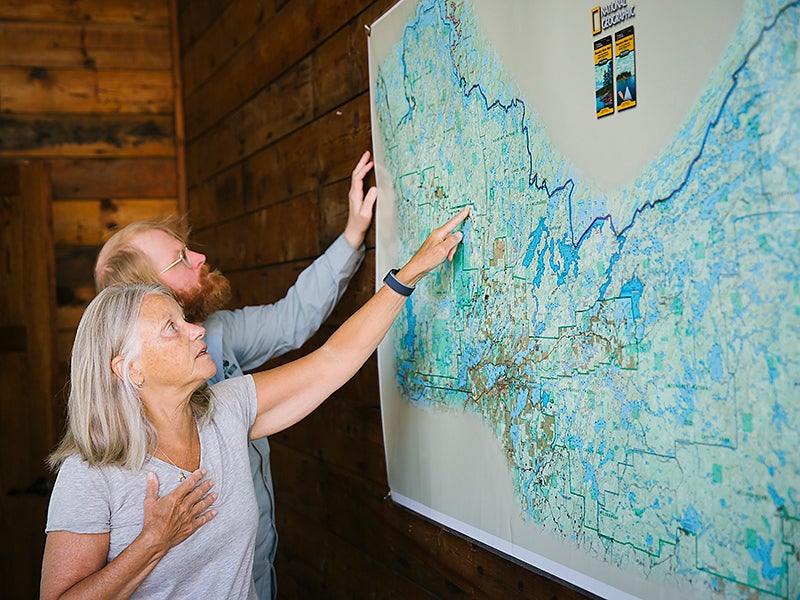
Becky Rom, national chair of the Campaign to Save the Boundary Waters, and Levi Lexvold, the Ely program coordinator, at the organization’s office in downtown Ely, Minnesota. (Brad Zweerink / Earthjustice)
In the mid-2000s, mining companies began looking for sulfide ores in the region. That’s when Boundary Waters advocates in Ely and elsewhere began pushing for a permanent ban on sulfide ore mining in the area.
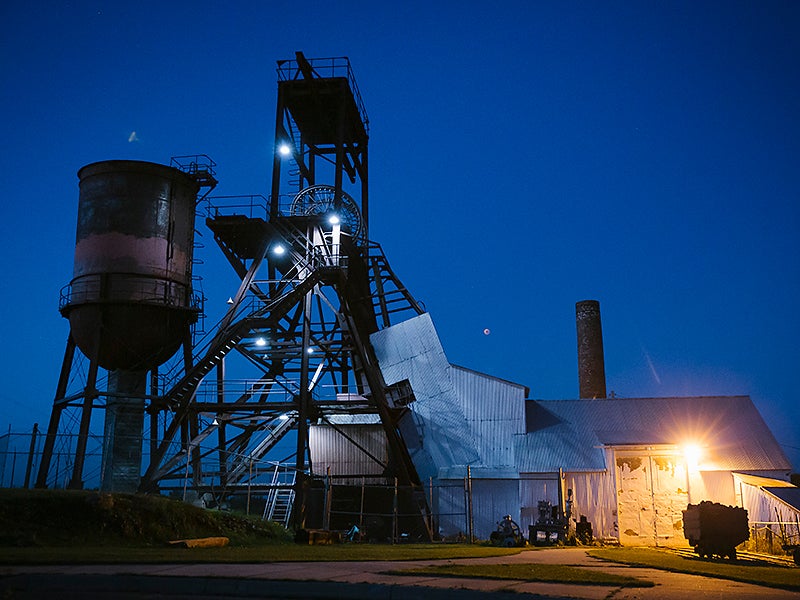
The historic Pioneer Mine in Ely, which produced iron ore until 1967, is now a museum. (Brad Zweerink / Earthjustice)
Though Ely has a long history of mining, even helping Minnesota supply the bulk of iron to the U.S. in World War II, sulfide mining has never before been allowed in the state.

A small frog in the water of Birch Lake, near the proposed site of the Twin Metals mine. (Brad Zweerink / Earthjustice)
Unlike iron ore, sulfide ore produces sulfuric acid when brought to the surface and exposed to air, water, and even humidity. This acid can contaminate waterways with dangerous acidic leachate, sulfate, and heavy metals. Increased sulfates in the water could also damage Minnesota’s famed wild rice beds and fuel the production of methyl-mercury, a dangerous neurotoxin that bioaccumulates up the food chain, especially in fish.
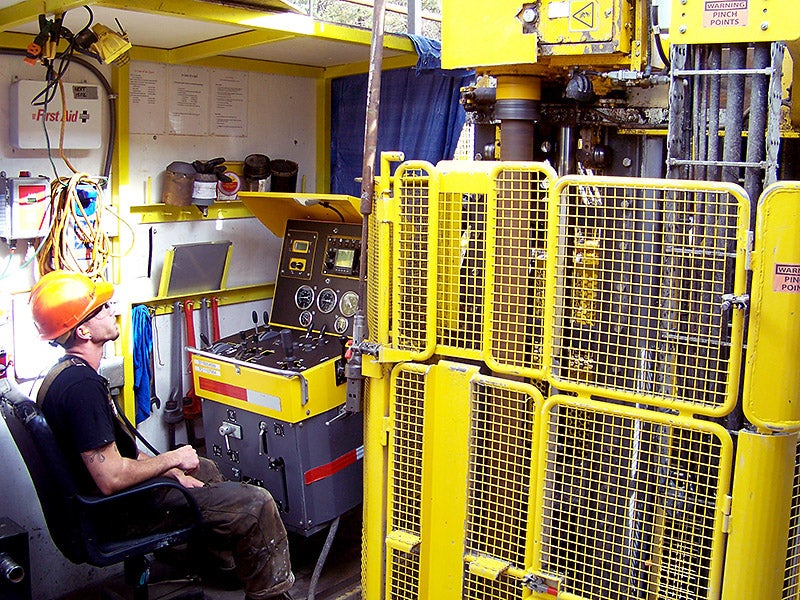
A prospecting drill rig brings up core samples in 2011, where Twin Metals Minnesota hoped to build a copper-nickel-platinum group metals mine near Ely, Minnesota. (Steve Karnowski / AP)
Despite these concerns, in 2018 the Trump administration reinstated two long-expired sulfide mining leases, opening the door for the Chilean-owned mining company Twin Metals to plan an industrial sulfide mining complex near the Boundary Waters. Boundary Waters advocates knew they needed sustained legal firepower from lawyers intimately involved with protecting public lands to stop the mining proposal. They turned to Earthjustice.
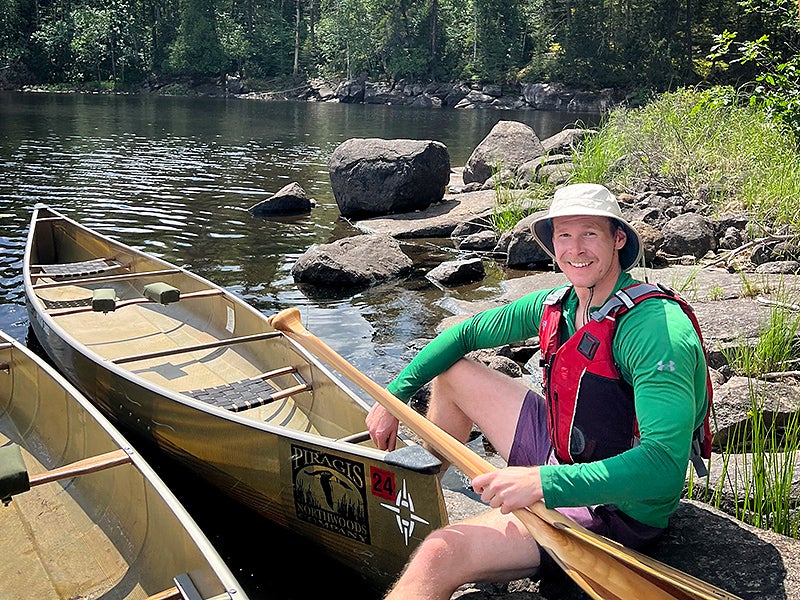
Earthjustice attorney Adam Ratchenski in the Boundary Waters Canoe Area Wilderness. (Alex Falconer / Save the Boundary Waters)
“Sulfide mining is risky on its own. And there are Superfund sites all around the country to show that,” says Earthjustice attorney Adam Ratchenski. “But it’s especially dangerous upstream of a pristine, water-based wilderness like the Boundary Waters.”
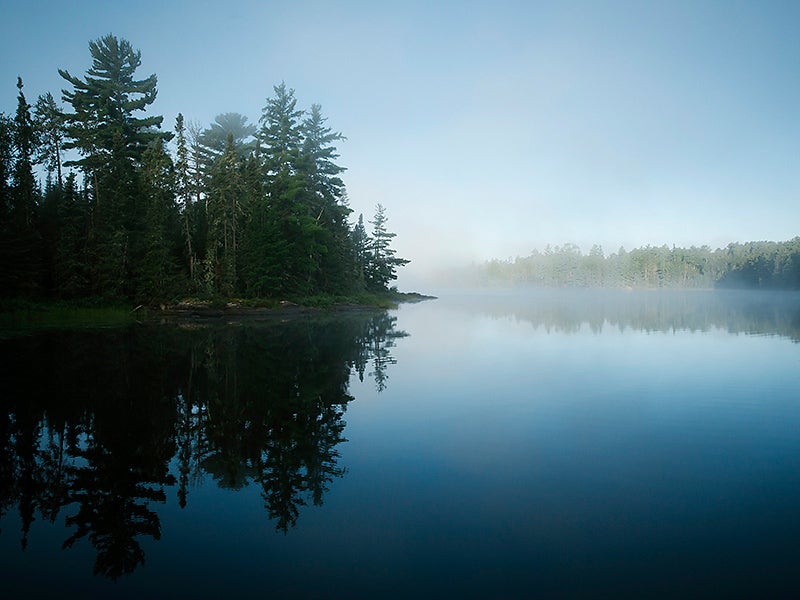
Mist on the water in early morning at the Boundary Waters Canoe Area Wilderness in Northern Minnesota. (Brad Zweerink / Earthjustice)
In April 2018, Earthjustice filed its first lawsuit to stop the project. On behalf of The Wilderness Society, Izaak Walton League of America, and the Center for Biological Diversity, Earthjustice argued that Twin Metals’ mine posed unacceptable risks to the Boundary Waters. Top government scientists had also made the same determination just a few years prior.
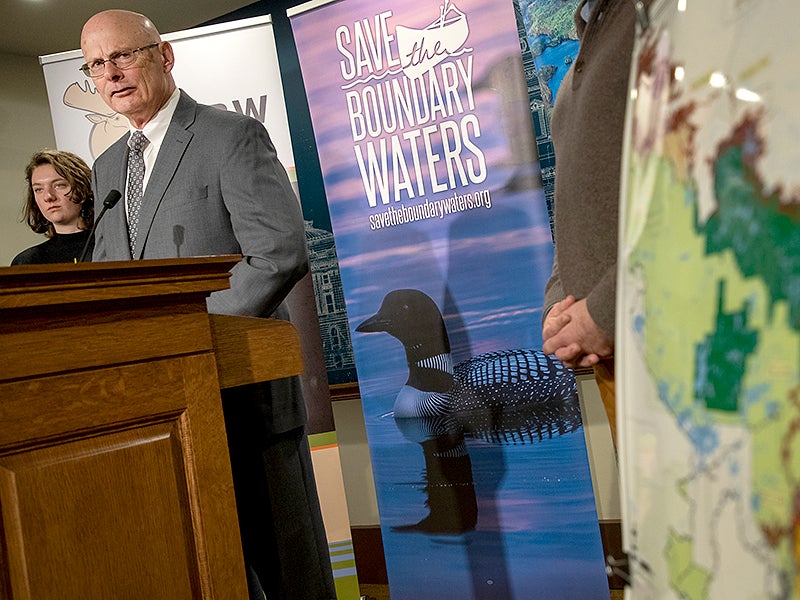
Former Minnesota Department of Natural Resources Commissioner Tom Landwehr speaks during a press conference at the Minnesota State Capitol in St. Paul in 2019. (Carlos Gonzalez / Star Tribune via AP)
At the same time, the Boundary Waters coalition built up public pressure to permanently protect the Boundary Waters. While Earthjustice lobbied policymakers on the Hill, as well as staff at regulatory agencies like the U.S. Forest Service, thousands of people across the country and world sent in comments urging the federal government to adopt a mining ban.
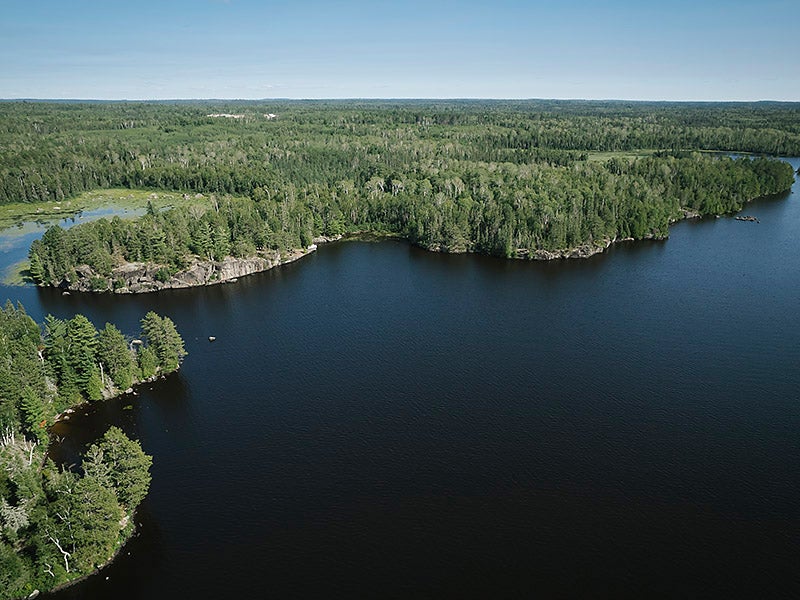
Birch Lake and the proposed Twin Metals mine site outside of Ely, Minnesota. (Brad Zweerink / Earthjustice)
In January 2022, the Biden administration cancelled the Twin Metals leases. Then one year later, in January 2023, it enacted a 20-year mining ban in the Boundary Waters watershed. This includes the withdrawal of 200,000+ acres of public lands in Superior National Forest from new mineral leasing. Twin Metals brought a lawsuit seeking to force the Biden administration to renew the two mining leases. Over a dozen businesses and organizations, including three conservation groups represented by Earthjustice, stepped in to defend the Biden administration’s actions.
A federal judge fully dismissed Twin Metals’ lawsuit in September 2023, siding with the government and Earthjustice, and keeping the Boundary Waters safe.

Save the Boundary Waters sign outside of Piragis Northwoods Co., a large outfitter in Ely, Minnesota. (Brad Zweerink / Earthjustice)
“This is a big victory for people and for climate,” says Earthjustice policy specialist Blaine Miller-McFeeley. “We are thankful to each of the advocates, business leaders, and Tribal Nations who raised their voice, and grateful to this administration for flexing its muscle to prevent this pristine and singular ecosystem from becoming just another casualty of the toxic mining industry.”
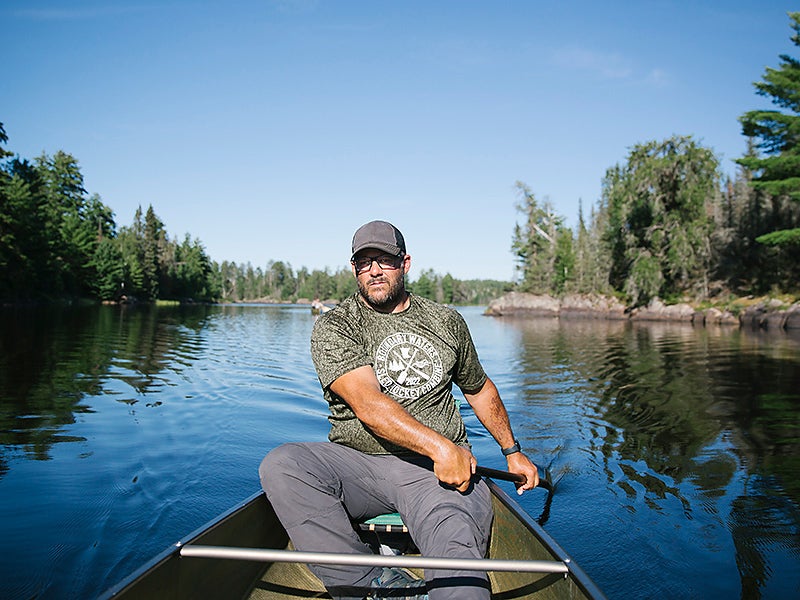
Boundary Waters guide Dave Hicks paddling his canoe through the wilderness area. (Brad Zweerink / Earthjustice)
Though this announcement ensures strong protections for the country’s most visited wilderness area, Earthjustice continues working to combat threats to the Boundary Waters. We will keep fighting until Congress makes these protections truly permanent.
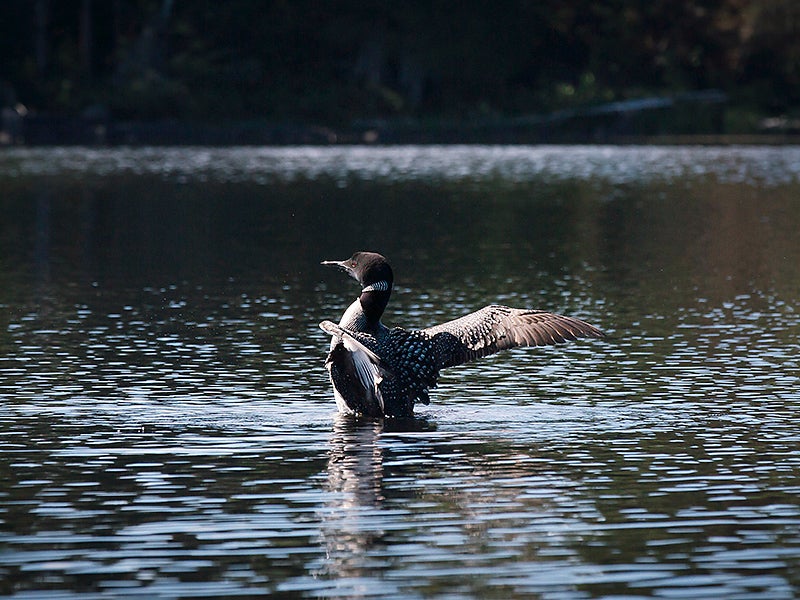
A loon spreads its wings in the Boundary Waters Canoe Area Wilderness. (Brad Zweerink / Earthjustice)
Originally published Jan. 26, 2023. Updated Sept. 7, 2023.
Earthjustice’s Midwest office works to partner with and support communities and Tribes fighting for environmental and climate justice. We also aim to protect our region’s precious places and wildlife, and build sustainable energy and climate solutions.
Established in 1989, Earthjustice's Policy & Legislation team works with champions in Congress to craft legislation that supports and extends our legal gains.